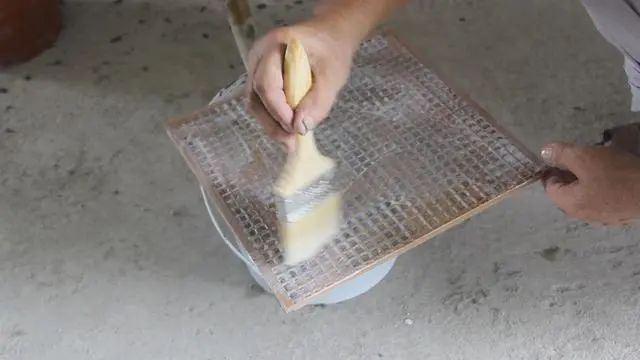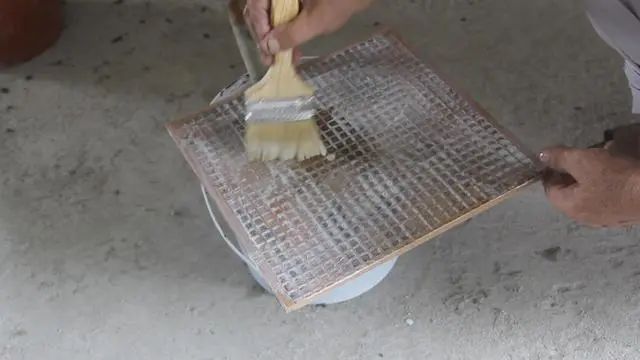The high-end tile market is experiencing a surge in popularity. These tiles feature smooth glazes, attractive appearances, durability, and good waterproof and moisture-resistant properties. Higher demands are also placed on the materials used for tiling, including tile adhesive on the back of the tiles to enhance the quality of spaces.

Tile adhesive is a glue-like material applied directly to the back of the tiles, used together with bonding materials like tile adhesive mortar or cement mortar, forming the tile bonding system. However, there are common mistakes often seen when using tile adhesive. These include:

Not cleaning the mould release agent from the back of the tiles: Before applying the tile adhesive, it is crucial to clean the dust thoroughly and residual mould release agent or wax from the back of the tiles. These substances create a barrier that prevents the tile adhesive from penetrating and forming a film, ultimately leading to bond failure and tile bulging.
Using tile adhesive on cement bases: When using single-component tile adhesive, it is essential to wait for the adhesive film to dry before applying tile adhesive mortar or cement mortar. Using tile adhesive on a cement base may result in the adhesive peeling off due to the excessive load.
It is essential to ensure that the coating is applied correctly.
There are two main issues to consider:
1. Under-coating:
This occurs when the coating is applied too thinly, which can damage the tile.
2. Over-coating: Some contractors apply tile adhesive only to the four corners of the tile to save money, time, or effort. This can lead to tile bulging. It is essential to ensure that the tile adhesive is fully applied to achieve the desired level of bonding strength. Furthermore, some professionals believe that using a thicker adhesive layer will enhance the stability and safety of the bond. It is essential to apply the glue in a thin, even layer to ensure a faster drying time and to avoid any issues with uneven drying or dripping.
Dilution of tile adhesive with water is a common practice. Some individuals add water to the adhesive to reduce the quantity required. The dilution of the adhesive reduces its polymer content, weakening its cohesion and overall performance.
It is important to note that leaving tile adhesive to dry for too long may reduce performance. During the drying process, the adhesive film matures, becoming transparent, non-peeling, and non-flaking, indicating that it has dried and cured. However, if the adhesive is left to dry for too long, the bond strength with materials like mortar will be weakened, and the adhesive is more likely to attract dust and contaminants. It is, therefore, not advisable to leave the adhesive to dry overnight or for extended periods.
It is not advisable to stack tiles too closely. Due to limited space at the construction site, some workers have stacked tiles with adhesive applied on the back together or placed them close to a wall corner. If the adhesive has not dried sufficiently after the recommended drying period, this is often incorrectly attributed to product quality issues. Ensuring that tile adhesive has proper air circulation as an interface material is important. It is essential to maintain good airflow to ensure that the glue dries and cures within two hours, regardless of the season.

The following are some common mistakes in the use of tile adhesive. Avoiding these errors when installing tiles ensures the adhesive performs optimally, providing a lasting bond strength and a stable tiling effect.




